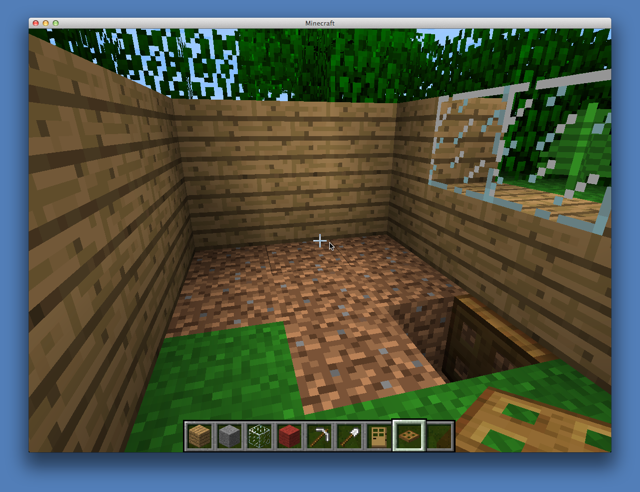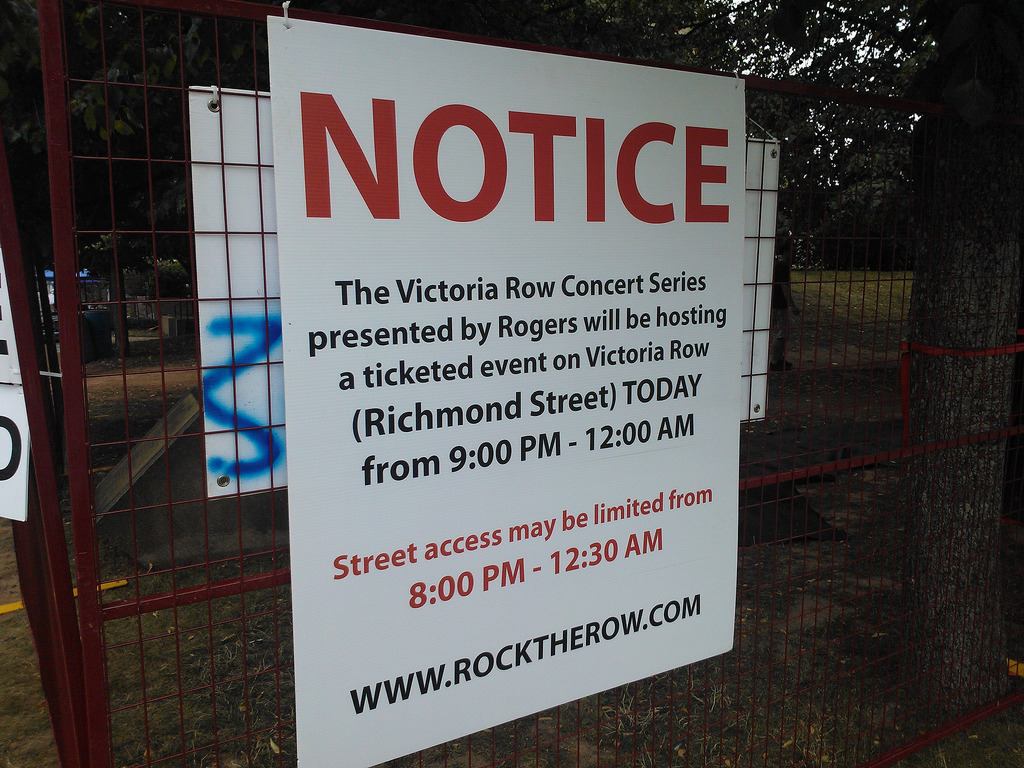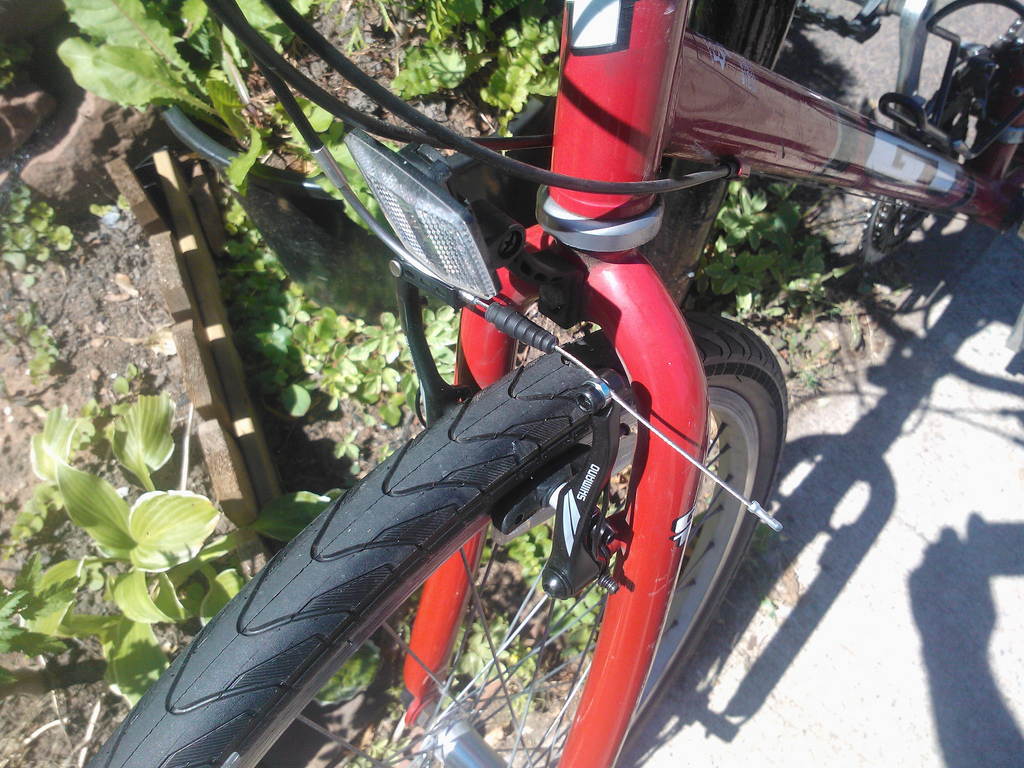On our way home from the letterpress studio last night Oliver and I happened upon Cape Breton music phenomenon Carmen Townsend playing live at the far end of Victoria Row.
While Victoria Row has never struck me as an ideal venue for live music — it’s an shipping-container-shaped amphitheatre — Townsend and her band were simply too powerful not to sit and watch.


I appreciated that the “we’re out to make music not money” style of the PEI Jazz and Blues Festival meant that the street wasn’t set up like an prison yard, and had attracted a large an enthusiastic crowd. We ended up borrowing chairs from Catherine’s studio (handy-by on the second floor above where we were perched) and stayed for the entire performance. It was a great night.
Since the middle ages bass clarinet and saxophone players have traditionally been the Hatfields and the McCoys of the horn section*. As a bass clarinet player, I was always on the other side of this great divide: there I was, a playing an unknown and unloved instrument, seated in the senior band beside the tenor saxophone players with all their swager and popularity and music featuring their solos. I have avoided saxophones ever since like the plague (the only exception being the soprano saxophone; as it’s also a misunderstood instrument bass clarinet players, along with the oboists and bassoonists, formed a sort of kinship-of-the-outcast; see also Heaven Can Wait).
Imagine my surprise, then, to hear the most beautiful music echoing up Victoria Row toward my office, only to find, on investigation, that it was coming from the Nikki Schieck Sax Quartet: four saxophones (four!), creating sounds I wasn’t aware could emanate from that confounded instrument.
Consider the saxophone fully-redeemed.
Nikki Schieck Sax Quartet are Barrie Sorensen (soprano/alto sax), Dan Rowswell (baritone sax), Melissa MacRae (tenor sax) and Nikki Schieck (alto sax). They’re a joy to listen to, and if you have the chance — even, or especially if you’re a longtime anti-saxite — you should make a point of seeking them out.
* I made this up.

It took me eight years to make it inside a performance at the PEI Jazz and Blues Festival. The delay was a combination of some misplaced misgivings about what “jazz and blues” music entails and a pigheaded determination not to support a festival that had put its sponsor’s inflatable beer cans in the middle of a city street. All it took, in the end, was a multi-year soft-sell campaign by members of the Williams-Nicholson-Sorenson musical dynasty.
In the end, I’m sad I didn’t get over my misgivings many, many years ago, as the Gypsophilia-Alain Caron double bill that Oliver and I enjoyed last night at Murphy’s Community Centre was a tour de force and if it’s typical of what I’ve spent 7 years missing, then it’s a grievous loss. Here’s a taste of what we saw and heard.

 |
 |
Architecture Week is coming up here on Prince Edward Island again in October — you may recall coverage here and blow-by-blow from last year — and I’ve been thinking about ways in which architects could better open their tent to we civilians (having office open houses and awards ceremonies is nice and all, but there’s only so much fun you can have in an architect’s office, no matter how nice the wine and cheese is).
Last year my friend Morgan turned me on to Minecraft, the digital world-building out of Sweden that’s sweeping the world. It took a year for me to get around to it, but after this year’s trip to Sweden I came home and installed it, and I’ve been playing it, off and on, on both my Mac and on the iPad.

Minecraft is a hard game to characterize, especially if, like me, you’re not a regular gamer, without the generally-accepted vocabulary (“a 4x vertical action scroller with HUD and MOOG capabilities,” or whatever). I’d describe it as a “limitless world where you can build cool stuff out of blocks.” There’s much more to it than that — zombies and such — but at its heart Minecraft strikes me as being essentially a game about architecture.
Which got me thinking: wouldn’t it be cool to turn more people on to Minecraft, in the company of architects. Architects, after all, spend all day, every day, thinking about nothing but architecture.
I like the idea of creating opportunties for architects to talk to real people, and for gamers — serious and casual — to learn more about architecture, and the idea of taking real-world architectural methodolgies inside a virtual world.
So I’ve proposed to the Architects Association of PEI that a “Minecraft for Architects” workshop be organized for this year’s Architecture Week: an event to bring civilians, architects, and gamers together in the same physical space for an evening of virtual space making together. And I’ve proposed to help facilitate this if asked.
If participating in, organizing or otherwise engaging in such an activity would interest you, please leave a note in the comments; ideas for format and structure are welcome too.
Oliver and I happened to be walking by the ticket booth for the Peake’s Wharf Boat Tours last night last as the 8:00 p.m. sunset cruise was set to depart. And so what started off as our regular after-supper walk along the waterfront turned suddenly into a spontaneous after-supper harbour cruise.

It can never hurt to see the place you live from a new perspective, and certainly Charlottetown-from-the-water is a different way of looking at the city: you see how everything fits (or doesn’t fit) together in a whole new way. And see things, like this retired oil tanker pylon, you never knew about before:

The night was balmy, the sea was calm, and, even though the “sunset” was mostly obscured by the clouds, the 70 minute cruise was an enjoyable way to spend the evening. We sailed up toward the Hillsborough Bridge, then circled back along the waterfront by the Charlottetown Yacht Club and Victoria Park and then out the mouth of Charlottetown Harbour until we were just opposite the Warren Cove lights. Then, under cover of darkness, we headed back to port.
There were only 6 others on the cruise with us, so we had lots of opportunity to move about the boat (they’ve got a full licensed bar and sell snacks too; we were the only ones who took advantage of this, buying a bag of chips for the sail toward home).
The cruise isn’t cheap — $25 for me and $12.50 for Oliver — but it’s a lot cheaper than buying a boat, and certainly the cheapest way of going overseas from home if you happen to live up the hill on Prince Street.
(“One if by land and two if by sea” is a line from Paul Revere’s Ride by Henry Wadsworth Longfellow).
I’m going a little wild today with the animated metal type. Show on my iPod Touch with iMotion HD (tripping the shutter from my iPad using the companion remote app). Type is Akzidenz Grotesk, purchased in the spring used from Atelier Domino in Montreal.
Catherine has been busy for the last month — actually, it’s been two months — preparing for her contribution to Art in the Open on August 25th: you can’t take a step around our house these days without tripping over some sort of woodland creature or another.
When Henk van Leeuwen tweeted this morning that galleries downtown, including the one here at The Guild under the Reinventorium, would be open late that night too, I reasoned that it was time to get in on the fun, and so an email here and a phone call there and suddenly I’m doing my own art out in the open.
Type in the Open
will run from 4:00 p.m. to 9:00 p.m.
on August 25, 2012
in the basement of The Guild
(enter through the gallery at 111 Queen Street)
I’ll be demonstrating my 1915 Golding Jobber No. 8 letterpress (formerly of Campbell’s Printing in Tryon) as well as the smaller Adana Eight Five (formerly of Prince County Hospital in Summerside), talking about printing with wood and metal type, and sending everyone out the door with something letterpress-printed to take home.
Oliver and I drove out to Victoria-by-the-Sea for our annual summertime “lunch at the Landmark Café, dessert at Island Chocolates” excursion — we are such creatures of habit that we happened to pick the same day as we did 5 years ago. There’s no better way to spend a lazy Sunday: Eugene’s meat pie is fantastic (as is the service, and the iced tea), and the factory coffee at Island Chocolates is the best combination of coffee and chocolate ever devised.
We decided to make a day of it and see the matinee of Trudeau Stories at Victoria Playhouse while were were there.

Which is how we found ourselves setting in the calm, cool environs of the little theatre along with a group of perhaps twenty sexagenarians watching Brooke Johnson interpret her unlikely friendship with Pierre Trudeau.
Pierre Trudeau was Prime Minister of Canada throughout much of my early life; as such he was both my archetypal Prime Minister, and, more generally, my archetype of what it meant to be a Canadian. So I found the notion that Johnson — herself roughly my own age — would become accidental friends with Trudeau late in his life an intriguing notion.
I enjoyed the show immensely: it’s more of a theatrical ode than an exercise in storytelling, but Johnson is a talented actor, and the ode is heartfelt and compelling.
Oliver, bless his heart, sat (mostly) silently through the 75 minute intermissionless show; it was only in the car afterwards that I realized that I probably should have explained to him who Pierre Trudeau was (Oliver was born three days after Trudeau’s death in 2000).
It’s a shame that the audience skewed older (there were many knowing laughs from the audience, suggesting some close familiarity with the subject): it’s really the younger generation that needs to understand more about what it’s like to have a Prime Minister who’s a facsinating, imaginative, iconoclast rather than simply economist-in-chief.
The show runs in Victoria-by-the-Sea until August 26th; I recommend you take it in.
Tonight marks the second of a three-date takeover of Richmond Street in Charlottetown by a concert series called “Rock the Row.”
Which means that if you walk from my house to my office you are greeted with signs like this:

This in addition to the specter of the entire neighbourhood being surrounded by 8-foot-high prison-like fencing to sequester the entertainment and the ticket-buyers away from public view.
I strongly disagree with the appropriation of public spaces for privately-run for-profit events.
I’m fine with the idea of privately-run concerts held on private land but the notion of closing a public street for commercial gain — especially age-discriminating commercial gain — seems just plain wrong.
Public space should be for the benefit of all the public, and I propose that the City of Charlottetown modify its bylaws with a simple requirement: if you want to use public land for your event, it must be free and open to all residents of the city.
Regular readers may recall my report of a visit to Dave’s Service Centre to fix a power steering leak in my 2000 VW Jetta last December. Well, last Saturday the same car sprung a leak in a different part of the steering system; fortunately it did this only 4 blocks from Dave’s, so I was able to hobble the car into the parking lot there. When they re-opened on Tuesday morning I dropped the key off, and on Tuesday afternoon I got a report on the problem: there was a leak in a steering component that isn’t available separately, meaning that one must purchase the entire steering assembly, a $500+ item.
Fortunately Dave was able to find a used assembly for $180 “on the other side” (in New Brunswick, not hell), and he got this shipped over, removed the parts I needed and used them to replace the leaking ones. Leaving me with a working power steering system and a saleable steering assembly minus tubes (watch for it online soon!).
What Dave couldn’t work his magic on, alas, was the front exhaust pipe, which I’ve known for a while also needs replacing. Unfortunately there’s a “flange” at the top of the pipe, also not sold separately, which needs replacing. Which means I need a new front exhaust assembly. Also $500+. And one of these wasn’t available on the other side. So I’m left to see if one can be found out there on the wild Internet.
Seeking some additional measure of control over my transportation system on a cheaper and more malleable level, I used this opportunity to drop my bicycle off at MacQueen’s Bicycle Shop for some much-needed attention; 18 hours later I picked it up and rode off on a freshly tuned-up bicycle complete with brand new tires (smoother “road” tires to replace the old, nobbly “off-road” tires; thanks to Rob for the suggestion) and new brakes:

This bike is about 10 years old now, and I’d never had the brakes replaced. They’d gradually worn down over the years, and while I knew that I needed new ones, I didn’t know how much I needed them until I tried out the newly-installed ones: wow, I can stop now! The old brakes were so bad as to be almost completely ineffective: the front ones squealed something awful and the rear ones were ground down to bare metal.
So now I have a smooth-riding bicycle. That I can stop whenever I like. With either hand. Combine that with the general lube and filter work by the folks at MacQueen’s and it’s like I’ve got a new bike.
Now, if I could only woo Oliver back to trying out bicycle riding, we would replace our weekly drive to the Farmer’s Market with a bicycle ride, and really and truly leave the car in the driveway 99% of the time.
In the meantime, if you happen to have a spare front exhaust pipe for a 2000 VW Jetta GLS 2.0 litre, please let me know.
 I am
I am